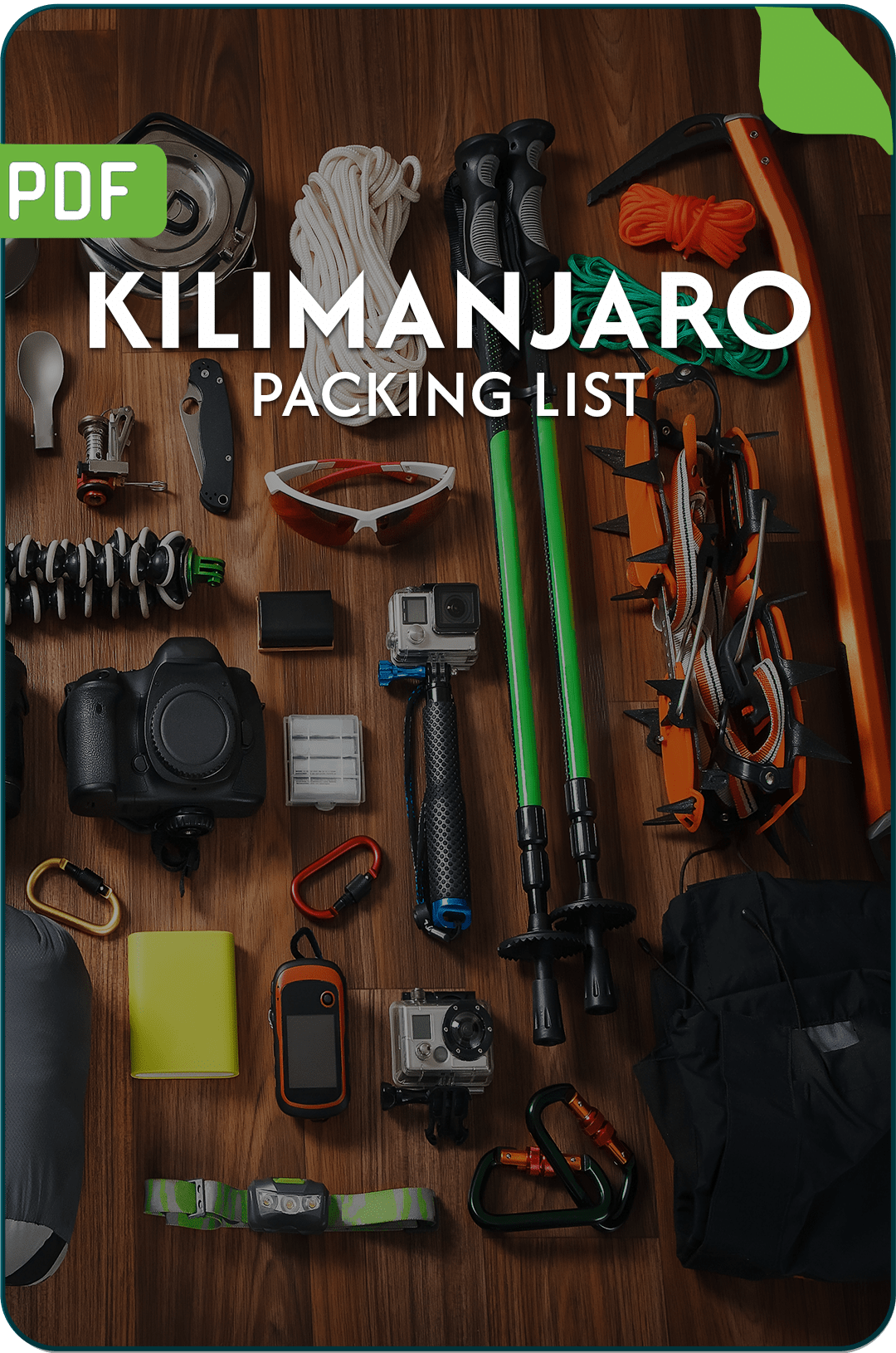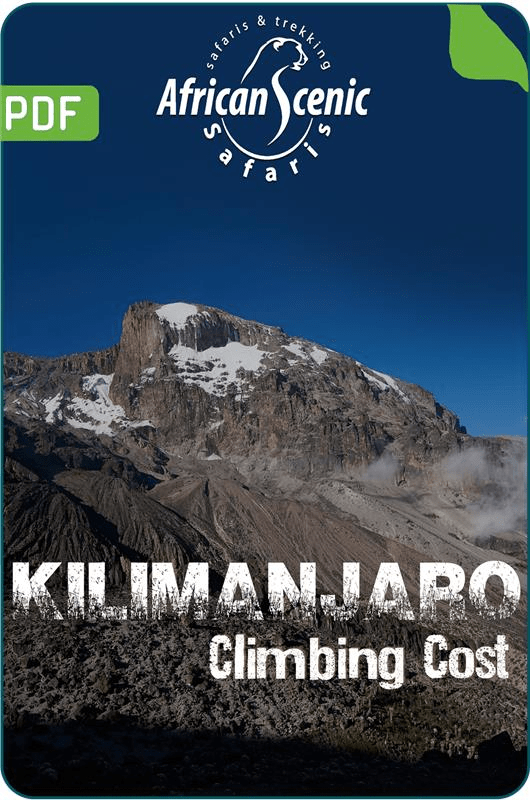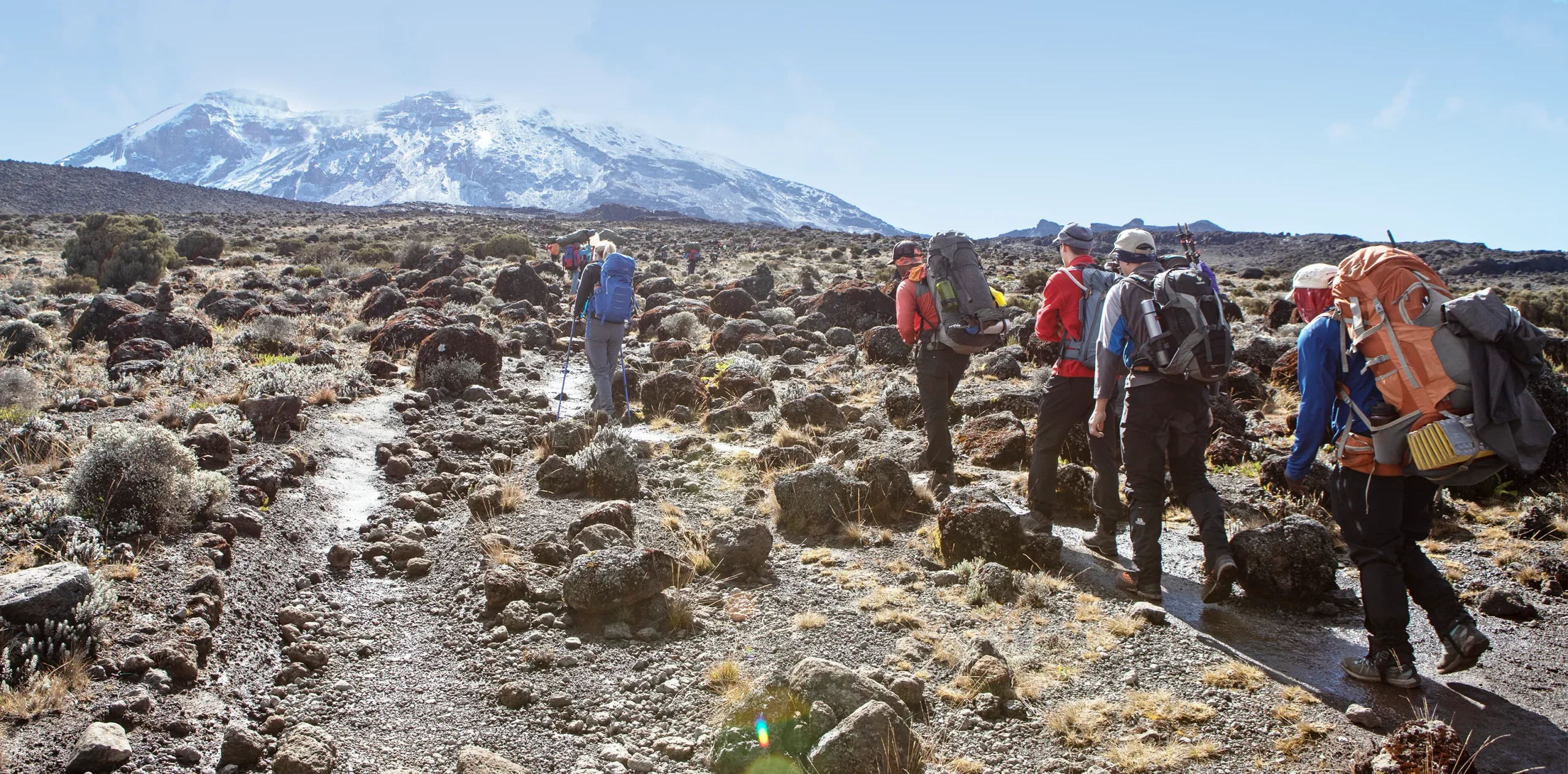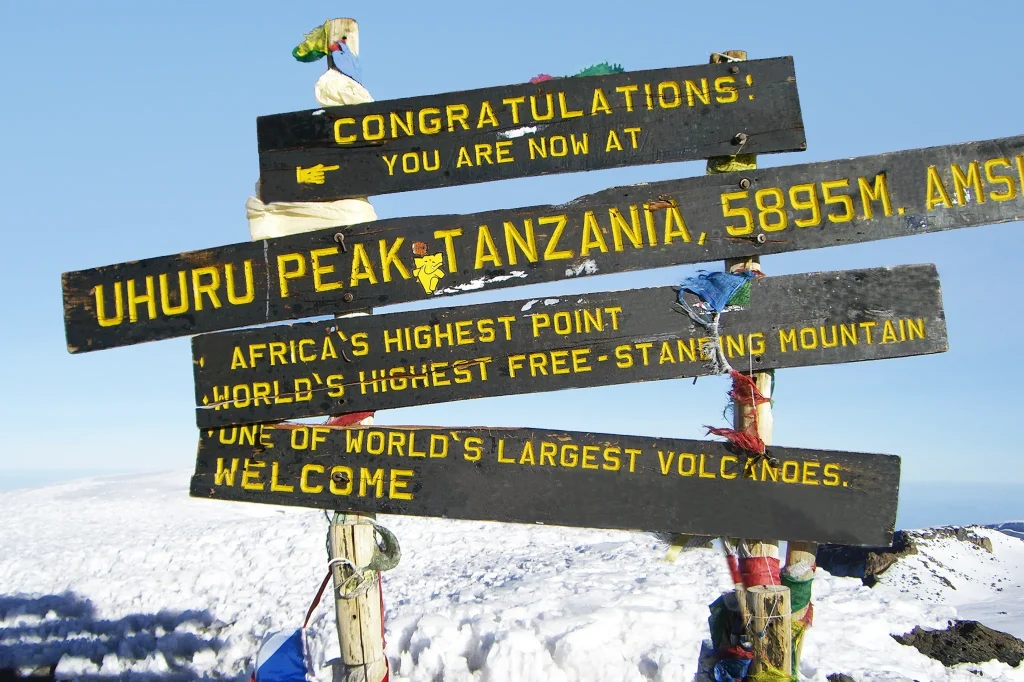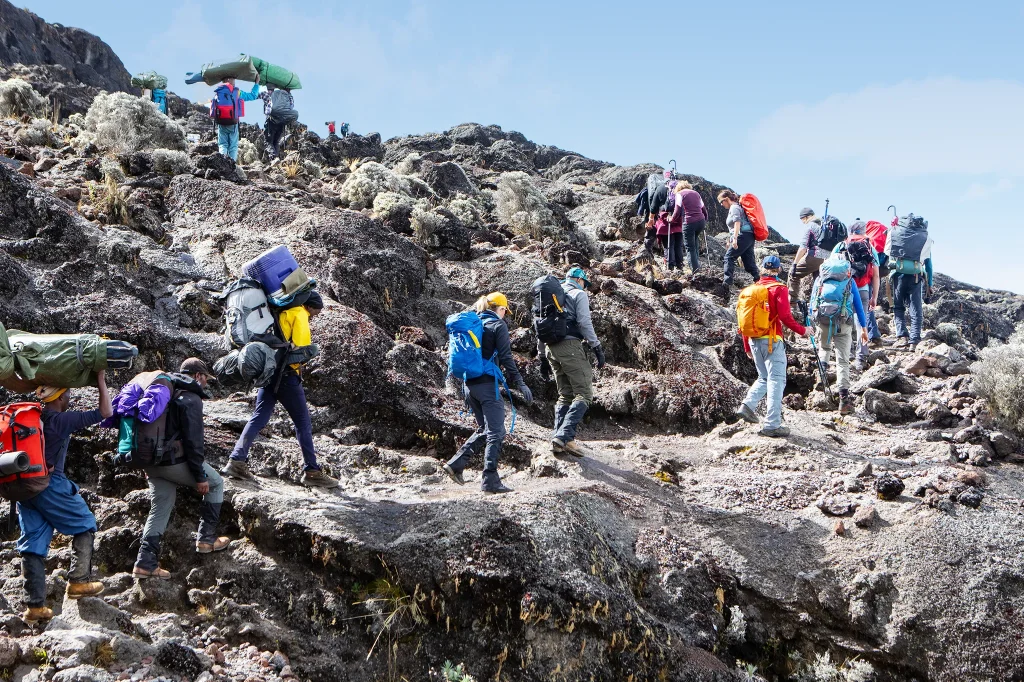The Kilimanjaro Height presents a unique set of challenges for climbers looking to scale the mountain, with the effects of altitude being the most glaring one. A major ratio of hikers who climb over 9,000 feet develop some sort of symptoms related to high altitudes.
Your overall climbing experience and altitude sickness that will eventually occur during the process of conquering Kilimanjaro Height go hand in hand.
In this blog post, we will cover what exactly the high-altitude effects are, what you should expect during your Mount Kilimanjaro Climbing adventure, and measures to overcome them.
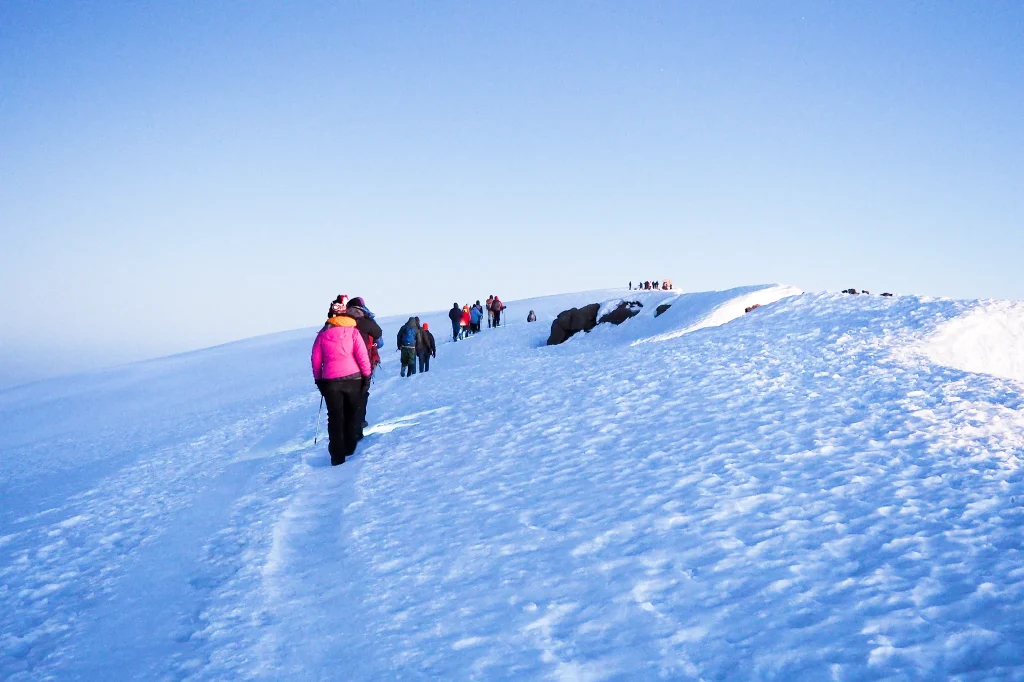
Kilimanjaro Height And High Altitude – What’s The Relation?
Kilimanjaro stands at a staggering height of 5,895 metres, and at Kilimanjaro’s Highest Point, there is approximately 49% less oxygen than at sea level. But, it’s not the percentage of oxygen in the air that changes; it’s the atmosphere’s barometric pressure (the air pressure) that’s reduced.
The percentage of oxygen in the air remains the same (20.9%), but the availability is reduced by the change in air pressure. This boils down to the fact that for any volume of air you breathe in, fewer oxygen molecules are available.
- The mountain’s height and its location in a high-altitude environment are directly related.
- As altitude increases, the air pressure and oxygen levels decrease, making it increasingly difficult for the human body to function properly.
- The effects of high altitude can range from mild symptoms such as headaches and nausea to more severe conditions such as altitude sickness.
| COMPONENT | KILIMANJARO HEIGHT AND HIGH ALTITUDE |
| Elevation | 5,895 meters (19,341 feet) above sea level |
| Relation | Height and high altitude are directly related |
| Effects of high altitude | Decreased air pressure and oxygen levels lead to difficulty in the functioning of the human body |
| Symptoms of high altitude | Headaches, nausea, and altitude sickness (in severe cases) |
Is There a Way to Prepare Myself for Kilimanjaro’s Height and Altitude?
Being well prepared for the Mount Kilimanjaro Elevation level is going to put you one step closer to a successful, stress-free, and most importantly, a safe climb.
But, it’s important to know that there’s no way in the world that you will completely overcome the effects of high altitude (even seasoned trekkers around the world have experienced some mild symptoms).
We are not medical professionals, so we can’t offer by-the-book advice that has a stamp of full proofness. But, a way that we can help you during your Climbing Kilimanjaro experience is to provide some suggestions that are right out of the brains of our trekking experts.
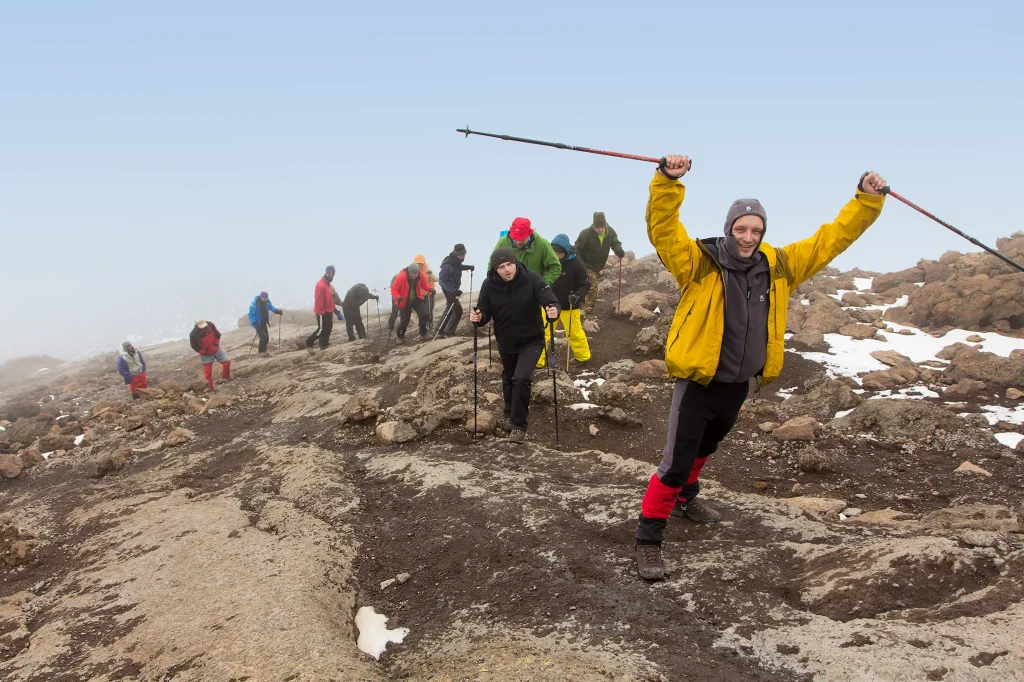
- A good fitness level is essential, and you should aim to train for several months before the climb.
- Cardiovascular and endurance training, along with strength training, is especially recommended to help prepare the body for the physical demands of the climb.
- In addition to physical preparation, you should also mentally prepare yourself for the journey ahead.
- Mental preparation involves developing the right attitude and mindset to face the challenges that come with climbing Kilimanjaro.
An Interesting Fact– There have been some instances of climbers training for the Height of Mt Kilimanjaro with altitude masks. This is a mask that mimics the decrease in oxygen that you will experience while climbing the mountain. This allows you to experience the effects beforehand. Whether or not this method is effective is up for debate, but if there’s an option, why not take a swing at it?
Kilimanjaro Height And Why Does Attitude Matter?
The right attitude is important when it comes to tackling such a high altitude.
Climbing Mt Kilimanjaro requires a positive attitude, determination, and mental toughness. The journey to the summit can be physically and mentally demanding, and climbers must be prepared to face the challenges head-on.
A positive attitude can help climbers push through tough times and significantly impact their overall experience. A negative attitude, on the other hand, can hinder progress and even lead to altitude sickness.
Climbing Kilimanjaro isn’t just about reaching the top, it’s about preparing your body, training your mind, and understanding how altitude affects every breath you take along the way.
Techniques For Preparing For Kilimanjaro’s High Altitude
Aerobic, Cardiovascular, and Strength Training are some of the techniques that you should consider practising a few weeks before your Kilimanjaro Climb. This includes elements like:
- Jumping jacks
- Squats
- Box Jumps
- On the spot, high knee running
- Warm-up and stretching
Note – Breathing exercises, interval training, and simulated altitude training are some other elements you can practice right a few weeks before your trekking voyage.
Symptoms of Altitude Sickness
As mentioned earlier in the post, avoiding the symptoms of altitude or acute mountain sickness when tackling the Height of Kilimanjaro isn’t altogether avoidable. So, knowing about the symptoms and treating them properly is a concept that you should emphasise to.
The symptoms of altitude sickness usually appear within 6 to 24 hours after arriving at high-altitude areas. The severity of symptoms may vary depending on individual susceptibility, rate of ascent, and altitude reached.
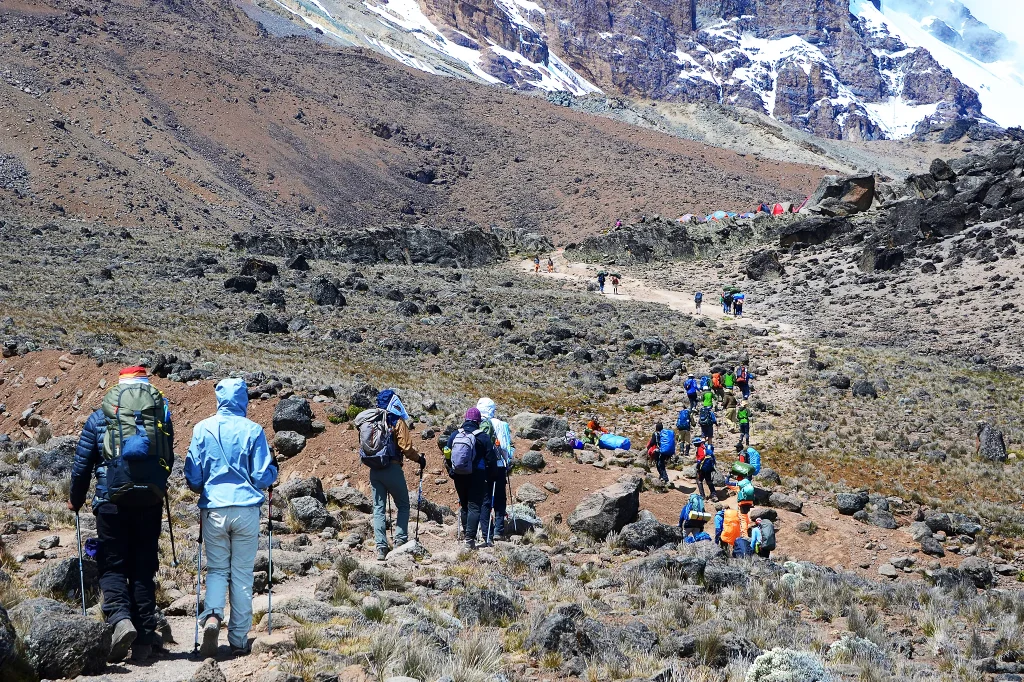
- The most common symptom of altitude sickness is a persistent headache that doesn’t go away with common painkillers.
- A feeling of nausea and vomiting can occur due to the body’s inability to adjust to the change in altitude.
- Encountering a sense of dizziness and light-headedness when you move around or stand up.
- You may feel short of breath even after mild exertion.
- Difficulty sleeping or poor quality of sleep is common in altitude sickness.
- You may lose your appetite, leading to weight loss.
And, you may also feel extremely tired and weak, making it difficult to perform physical activities.
Treatment Strategies for Altitude Sickness
If you suspect that you have altitude sickness, it is essential to take immediate action to avoid severe complications. Some of the proper treatments for altitude sickness include:
Rest and Acclimatization: It is essential to rest and take time to acclimatize to the new altitude before resuming physical activities.
Oxygen Therapy: In severe cases, oxygen therapy can help to relieve symptoms.
Medications: Medications such as acetazolamide can help to reduce symptoms.
Descend: If symptoms persist or become severe, it is crucial to descend to a lower altitude.
Hydration: Drinking plenty of fluids helps to keep your body hydrated, reducing the risk of altitude sickness.
Note – If you experience major symptoms like shallow breathing and chest congestion, then you should descend straightaway.
Mind Over Matter – Spike Up Your Mental Fortitude And Come Out On Top!
Thus, as has been demonstrated, coming out on top against the intimidating Kilimanjaro Height, though not an easy task, is certainly probable.
With the right acclimatization profile, following the training routine, and having the right mindset and attitude, your Mount Kilimanjaro Climbing adventure is going to reach the next level or reach new heights – no pun intended!



